Tenderness: fuzz, bud tips, white hairs
Strip shape: tightness, straightness, thickness, roundness, flatness, weight
Color: uniform color, bright luster, oily and lively
Cleanliness: purity, impurities
Aroma: intensity, strength, purity, duration
Taste: strong, robust, fresh, mellow, bitter, astringent, coarse, off
Liquor color: hue, brightness, turbidity
Leaf bottom: intactness, tenderness, color, uniformity
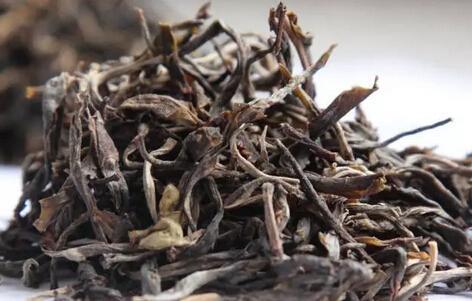
2Standards for Dry Tea Appraisal:
(1) Terminology for Dry Tea Appearance (Tenderness, Strip Shape, Cleanliness)
Fine and tender: tender buds and leaves with visible fuzz.
Tight and elegant: tender leaves with thin, tight, and elegant strips, showing bud tips.
Tight and firm: less tender than fine and tight, firm with bud tips, heavy body.
Tight and solid: tight and heavy, slightly less tender, fewer bud tips.
Coarse and solid: older leaves, no tenderness, thick strips, slightly light.
Bud tips: undeveloped tender tips, usually with white fuzz.
Visible fuzz: white fuzz on buds and leaves, dense fuzz on tips is called "visible fuzz," which can be golden, silver, or gray.
Fine and tight: long, thin, tightly rolled strips.
Thick and firm: thick and tightly rolled strips.
Body: tenderness, thickness, weight. Generally, tender buds, thick leaves, and heavy tea are better.
Heavy and solid: tightly rolled strips or granules, feeling heavy when weighed, usually from thick and tender leaves.
Uniform: similar shape, size, thickness, length, and weight.
Smooth: flat shape, heavy texture, shiny.
Flat: flat and straight.
Short and broken: short strips, many broken pieces, uneven.
Exposed veins: improper rolling causes leaf flesh to fall off, exposing veins.
Yellow head: old leaves rolled into lumps, low tenderness, yellow color.
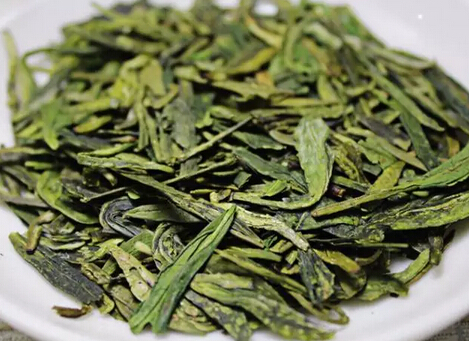
(2) Terminology for Dry Tea Color
Dark green: deep green with black, uniform and shiny.
Green and fresh: green and lively, glossy.
Gray-green: green with gray.
Rust color: deep red and dull, no luster.
Blue-green: green with blue, slightly less glossy.
Sandy green: frog-skin green and oily, the color of high-quality oolong tea.
Blue-brown: brown with blue. Black and shiny: black with good luster.
Dry and dull: old leaves, dry and dull color.
Mixed: uneven color, mixed tenderness, chaotic.
Liver color: red and dark, like liver. Brown: brown with red, older leaves.
(3) Appraisal of Dry Tea Appearance for Seven Major Tea Types:
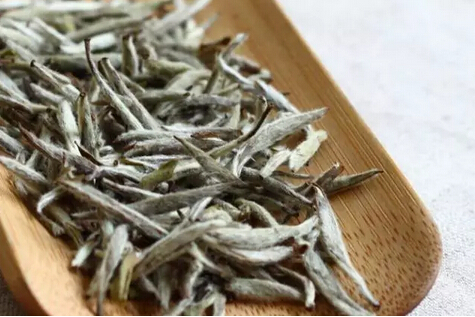
White Tea:
High grade: abundant and plump fuzz, tender leaves; silver-white fuzz with luster, gray-green (silver-white underside) or dark green leaves; flat and unfolded leaves, curled edges, slightly connected buds and leaves, upward-pointing tips without breakage.
Medium grade: thin and sparse fuzz; iron-colored leaves; unfolded, folded, or curved leaves.
Low grade: uneven tenderness, mixed with old leaves; grass-green, yellow, black, red, or waxy leaves; irregular, uneven, broken leaves.
Green Tea:
High grade: tender or plump leaves, high bud ratio; tender green or emerald green; some appear silver-green due to white fuzz.
Medium grade: slightly tender leaves, mainly one bud with two or three leaves; slightly thin buds; deep green color, less white fuzz.
Low grade: uneven tenderness, few buds, mainly mature unfolded leaves; yellow-green color, often dry, no white fuzz.
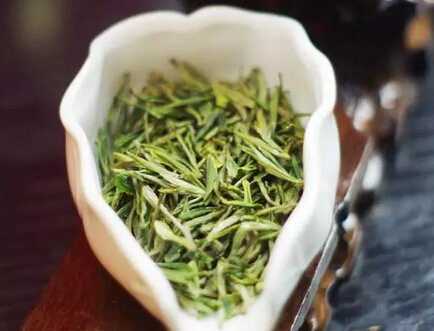
Yellow Tea:
High grade: plump buds, abundant fuzz, golden or yellow-green color.
Medium grade: less plump buds, some fuzz, dark green color.
Low grade: thin buds, some fuzz, gray color.
Oolong Tea:
High grade: thick, firm, and curved strips for straight types, thick for curled types; sandy green and black or green and black-brown for high-quality oolong tea.
Medium grade: slightly tight strips, yellow-green or yellow-brown color.
Low grade: loose strips for low-quality oolong tea; black-brown, brown, dry red, or red color.
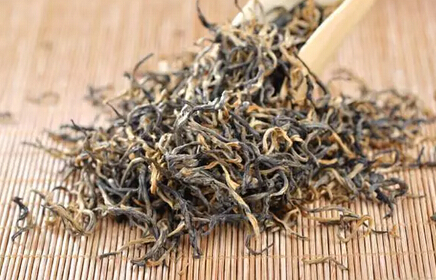
Black Tea:
High grade: tight, thin, and uniform strips; black and oily color, golden bud tips.
Medium grade: slightly tight and uniform strips; black color, fewer buds.
Low grade: uneven size and length, rough appearance, many impurities; dark leaves, black bud tips, or gray, silver, dry red leaves.
Dark Tea:
Fu brick tea has black-brown surface, abundant "golden flowers" when broken; Hei brick tea has flat surface, clear patterns, sharp edges, uniform thickness, black-brown color, no black or white mold, may have "golden flowers"; Qianliang tea has tight and solid columns, black-brown and shiny, may have "golden flowers"; Tianjian tea has black and oily color, aged tea has "camphor" aroma.
3Key Points for Tea Aroma Appraisal
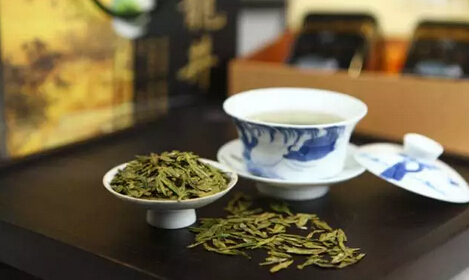
(1) Aroma Appraisal:
1. Key Points for Tea Aroma Appraisal:
(1) The best leaf temperature for smelling aroma is 45°C–55°C.
(2) Each sniff should last 2–3 seconds, not exceeding 5 seconds or less than 1 second.
(3) The entire nose should be inside the cup, but breathing should not be directed at the cup to avoid diluting the aroma.
(4) In winter, sniff quickly; in summer, wait 3–5 minutes after brewing.
2. Aspects of Tea Aroma Appraisal:
(1) Aroma intensity: Pure: pure aroma, no off-odors; Strong: high and long-lasting, intense; Fresh: refreshing and lively; Clear: fresh and clean; Flat:平淡无奇; Coarse: rough and sometimes astringent, from old leaves.
(2) Purity: High, fresh, strong, long-lasting, pure, and free of off-odors are best. High-aroma tea, new tea, and well-fired tea have strong and pure aromas; low-quality tea, aged tea, or tea with high moisture has weak, low, and mixed aromas.
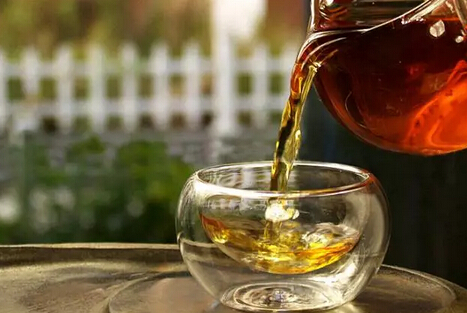
3. Tea Aroma Terminology
Sweet aroma: high and sweet, like well-fired sweetness.
Pure: clean aroma, not too high or low, no off-odors.
Fresh: pure and soft, not too strong, elegant.
Subtle: elegant and refined, slow and lasting.
High and fresh: fresh and refreshing, soft and lasting.
Floral: sharp and fresh, like flower aroma.
Tender: fresh and pleasant tender aroma.
Rich: strong and lasting, with special fruit or flower aroma.
Grassy: fresh leaf grass aroma.
High-fired: strong fire aroma from high temperature and long firing.
Muddy: mixed with other odors, unclear.
Burnt: severely over-fired.
Stuffy: unpleasant cooked aroma.
Off: mixed with unrelated odors.
Pine smoke: aroma from pine wood firing, traditional for dark tea and smoked small-leaf tea.
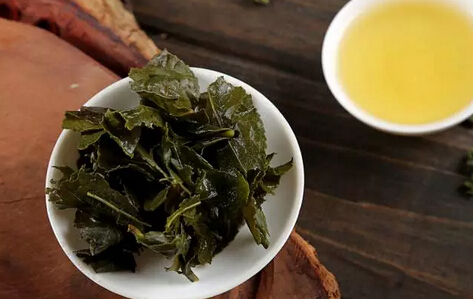
(2) Aroma Appraisal for Seven Major Tea Types:
White Tea:
High grade: strong and pure fuzz aroma.
Low grade: weak aroma, grassy or fermented odor.
Green Tea:
High grade: fresh, tender, or fuzz aromas, with floral, fruity, or honey sweetness.
Low grade: smoky, sour, moldy, or over-fired odors.
Yellow Tea:
High grade: strong and sweet aroma.
Low grade: stuffy and cooked aroma.
Oolong Tea:
High grade: floral and fruity aroma, strong and lasting.
Low grade: weak aroma, oily or burnt odors.
Black Tea:
High grade: pine smoke aroma for small-leaf tea, sweet potato aroma for Gongfu tea, orange sweetness for Sichuan tea.
Low grade: weak, muddy, short-lasting, or off-odors.
Dark Tea:
High grade: aged aroma for brick and basket tea, no green tea freshness or black/oolong tea sweetness and floral aromas.
Low grade: no green tea freshness or black/oolong tea sweetness and floral aromas.